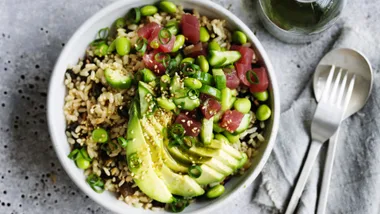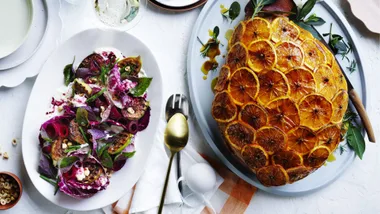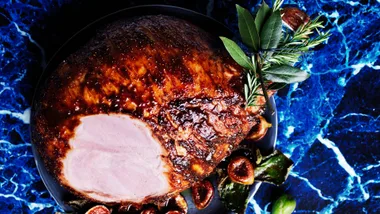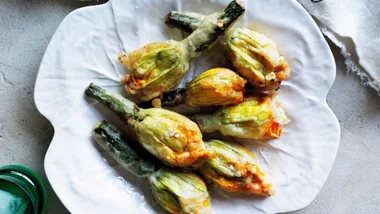Sarah Cicolini arrived in Rome a decade ago from Abruzzo, a mountainous region in central Italy known for its grazing sheep and rustic, rural cuisines. She had come to study medicine but was also a passionate cook, learning at her grandmother’s side as a child and working in hotels as a teenager. At first, she tried balancing restaurant shifts with her university coursework but soon realised her love of the kitchen was eclipsing her desire to be a doctor. “Neither doctors nor cooks can have second jobs,” says Cicolini. “Eventually, the time came for me to choose one and I have been working in restaurant kitchens ever since.”
After working in bars, pizzerias and fine-dining kitchens in Rome, the 30-year-old chef is now running her own restaurant, Santo Palato, which she opened in 2017. The place is ostensibly a Roman trattoria, a casual neighbourhood joint, serving local favourites like guanciale-laced carbonara, simmered offal and seasonal vegetables. But the menu also features dishes from Cicolini’s native region, a cuisine that harmonises perfectly with that of Rome. Indeed, many Roman classics were influenced by the arrival of peasants from Abruzzo over the past century.
Cicolini serves her Roman-Abruzzese cuisine in the Appio-Latino district not far from where the basalt of the Via Appia Antica begins and where the Basilica di San Giovanni in Laterano attracts Catholic pilgrims. This in-between neighbourhood is a mix of turn-of-the-20th-century villas, Fascist-era public housing and middle-class city blocks.
“When I thought of opening my own place, it had to be here. It has been my adopted home for 10 years, plus when we first opened there wasn’t much staff,” says Cicolini. “I had to be close out of necessity.” Now, whether Santo Palato is in service or not, you’ll likely find Cicolini in its small dining room or even smaller kitchen receiving deliveries or prepping ingredients.
Santo Palato’s dimensions keep the menu limited to perennial classics, and plenty of seasonal dishes, too. Some, like lasagne con broccolo romanesco, adapt traditional recipes, while others like fusilli con ragù di pecora feature a modern twist, in this instance a grating of lemon zest to brighten the dish. In all cases, Cicolini’s food is thoughtful and never sacrifices tradition on the altar of useless innovation. Every choice she makes is in the service of balance and flavour.
Santo Palato, Piazza Tarquinia, 4a/b, 00183, Rome, Italy, +39 06 7720 7354.
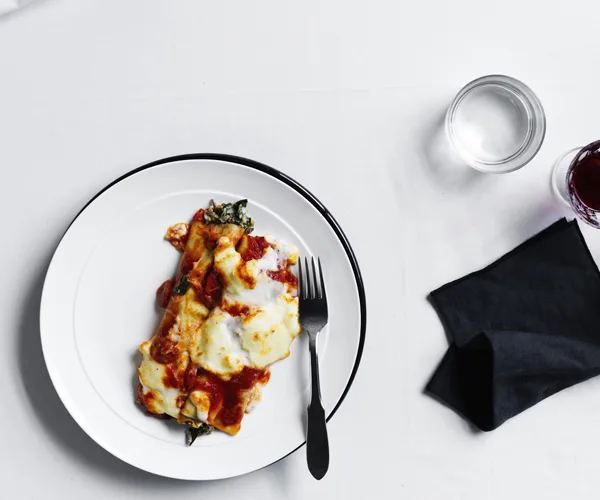
Beef and ricotta cannelloni
“Cannelloni isn’t your everyday pasta,” says Cicolini. “Thanks to the numerous components, it signals a festive occasion, like a holiday or a Sunday lunch. My version uses a par-cooked besciamella – I like it to finish cooking in the oven with the pasta – and scales back the quantity of meat, which I think gives the final dish greater balance.”
A.jpg?fit=650%2C542&resize=650%2C542)
Rigatoni all’Amatriciana
Rigatoni all’Amatriciana (Rigatoni with tomato sauce, guanciale and Pecorino Romano)
“Amatriciana is a great Roman classic, but there’s no one recipe; everyone has their own spin on it,” says Cicolini. “Like Sora Lella, the late and legendary Roman chef, I use a touch of vinegar. This trick, along with the short cooking time for the sauce, keeps it light and pleasantly acidic. I finish the dish with some crisp guanciale for a contrast of texture.”
A.jpg?fit=650%2C542&resize=650%2C542)
Lasagne with romanesco
Lasagne con broccolo romanesco (Lasagne with romanesco)
“In Italy, lasagne is always made with meat, but I often swap it for romanesco (see p109), Roman cauliflower, which I cook beyond the point of doneness,” says Cicolini. “The longer cooking time pushes the romanesco past its natural sweetness and pulls out all these savoury flavours. It’s a complex dish with layered flavours to the salt coming from the anchovies and Parmigiano-Reggiano.”
A.jpg?fit=650%2C542&resize=650%2C542)
Ditali with chickpeas and smoked pancetta (Pasta ceci e pancetta affumicata)
Pasta ceci e pancetta affumicata (Ditali with chickpeas and smoked pancetta)
“I learnt this recipe from my grandmother,” says Cicolini. “She would make this classic soup with pancetta leftover from charcuterie plates. I add dried sweet peppers, but you can also use dried chilli flakes.” Start this recipe a day ahead to soak the chickpeas.

Spaghettoni con cacio e pepe
“This classic Roman pasta dish was traditionally prepared by peasants and shepherds who made pasta in the morning, dusted it with salted sheep’s cheese, and wrapped it up to eat with their hands in the fields at lunchtime,” says Cicolini.

Mezze maniche alla gricia
Mezze maniche alla gricia (Mezze maniche with guanciale, Pecorino Romano and black pepper)
“In Rome, gricia is just as famous as carbonara or cacio e pepe,” says Cicolini. “It’s got all the classic Roman ingredients: guanciale, Pecorino Romano and black pepper.”
A.jpg?fit=650%2C542&resize=650%2C542)
Fusilli con ragù di agnello
Fusilli con ragù di agnello (Fusilli with lamb ragu)
“In Abruzzo we eat a lot of lamb and mutton; it turns up roasted, stewed and simmered in sauces,” says Cicolini. “This dish riffs on this classic Abruzzese pasta accompaniment by adding a little lemon rind for fragrance and flavour, and the thyme evokes the wild herbs that the sheep encounter as they graze through the mountains.”

